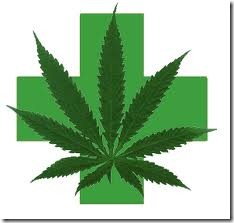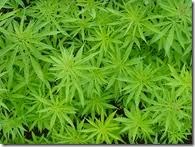
Monday, November 8, 2010
AFFIDAVIT OF FACT
AND NOTICE OF INTENT AND CLAIM OF RIGHT
TO CULTIVATE, POSSESS, USE, TRANSPORT AND DISTRIBUTE HEMP
Conrad Justice Kiczenski, herein known as Affiant, being first duly sworn upon oath does hereby declare and affirm the following facts:
1. You are hereby given lawful notice that the plant called Hemp (Cannabis genus) is a vital natural-resource for food, clothing, medicine, fuel, and paper; a religious sacrament, as well as being a “Strategic and Critical Material” for “military”, “essential civilian”, and “industrial” purposes as documented in Exhibits A, B, C, D, E, & F attached hereto, and as such is “accessible” and “protected” under International Law cited herein.
2. You are hereby given lawful notice of Affiants intent to cultivate, possess, use, distribute and transport the plant known as Hemp (Cannabis genus).
3. Affiant claims the right to carry out the foregoing intent under sanction of the following constitutionally ratified treaties (Pursuant to U.S. Const. Art. VI. Sec. 2):
International Covenant on Economic, Social and Cultural Rights, Article 11, Sections 1 & 2, Dec. 16, 1966,
International Covenant on Economic, Social, and Cultural Rights, Article 12, Section 1, Dec. 16, 1966, http://www2.ohchr.org/english/law/cescr.htm
International Covenant on Civil and Political Rights, Article 18, Section 1, Dec. 16, 1966, http://www2.ohchr.org/english/law/ccpr.htm
United Nations Convention on the Prevention and Punishment of the crime of Genocide, Article II (c), Dec. 9, 1948, http://www2.ohchr.org/english/law/genocide.htm
4. The International Covenant on Economic, Social, and Cultural Rights, in Article 11, Sections 1 & 2, states:
1. The States Parties to the present Covenant recognize the right of everyone to an adequate standard of living for himself and his family, including adequate food, clothing and housing, and to the continuous improvement of living conditions. The States Parties will take appropriate steps to ensure the realization of this right…
2. The States Parties to the present Covenant, recognizing the fundamental right of everyone to be free from hunger, shall take, individually and through international co-operation, the measures, including specific programs, which are needed:
(a) To improve methods of production, conservation and distribution of food by making full use of technical and scientific knowledge, by disseminating knowledge of the principles of nutrition and by developing or reforming agrarian systems in such a way as to achieve the most efficient development and utilization of natural resources;
(b) Taking into account the problems of both food-importing and food-exporting countries, to ensure an equitable distribution of world food supplies in relation to need.
4a. The interpretation for the right to adequate food, as given by the United Nations Committee on Economic, Social, and Cultural Rights in General Comment Number 12 states:
The right to adequate food is realized when every man, woman and child…has physical and economic access at all times to adequate food or means for its procurement.
The Committee considers that the core content of the right to adequate food implies:
The availability of food in a quantity and quality sufficient to satisfy the dietary needs of individuals…Dietary needs implies that the diet as a whole contains a mix of nutrients for physical and mental growth, development and maintenance…Availability refers to the possibilities…for feeding oneself directly from productive land or other natural resources…
Violations of the right to food can occur through…adoption of legislation or policies which are manifestly incompatible with pre-existing legal obligations relating to the right to food; SEE: http://www.unhchr.ch/tbs/doc.nsf/%28Symbol%29/3d02758c707031d58025677f003b73b9?Opendocument
4b. Affiant submit’s the following Exhibits as sufficient supporting evidence that Hemp qualifies as an “adequate food resource” and is therefore “accessible” under Article 11 of the International Covenant on Economic, Social, and Cultural Rights:
Pursuant to Presidential Executive Order 12919, the “NATIONAL DEFENSE INDUSTRIAL RESOURCES PREPAREDNESS” order, Section 901 (e) & (l), attached hereto as Exhibit A, “Hemp” is defined as a “food resource” and qualifies as a ‘‘Strategic and Critical Material’’.
According to an excerpt from “Hempseed Nutrition” by Lynn Osburn, attached hereto as Exhibit B, a scientific analysis of hemp seed nutrition reveals that “Cannabis hemp seeds contain all the essential amino acids and essential fatty acids necessary to maintain healthy human life. No other single plant source provides complete protein in such an easily digestible form, nor has the oils essential to life in as perfect a ratio for human health and vitality. Hempseed is the highest of any plant in essential fatty acids.”.
4c. Affiant submit’s the following Exhibits as sufficient supporting evidence that Hemp qualifies as an adequate resource for “clothing”, “military”, “essential civilian” and “industrial” purposes, as well as other necessary resources for attaining an “adequate standard of living” including “paper” and biomass for “fuel” and is therefore further “accessible” under Article 11, Section 1 of the International Covenant on Economic, Social, and Cultural Rights:
The transcript of a 1942 USDA film entitled “Hemp for Victory”, attached hereto as Exhibit C, states that “For thousands of years… this plant had been grown for cordage and cloth… For the sailor, no less than the hangman, hemp was indispensable…Indeed the very word canvas comes from the Arabic word for hemp…All such plants will presently be turning out products spun from American-grown hemp: twine of various kinds for tying and upholsters work; rope for marine rigging and towing; for hay forks, derricks, and heavy duty tackle; light duty fire hose; thread for shoes for millions of American soldiers; and parachute webbing for our paratroopers…hemp for mooring ships; hemp for tow lines; hemp for tackle and gear; hemp for countless naval uses both on ship and shore. ”.
According to a Popular Mechanics Magazine article, VOL. 69 February, 1938 NO. 2, pp. 238-240, entitled “NEW BILLION-DOLLAR CROP”, attached hereto as Exhibit D, states that “Hemp is the standard fiber of the world. It has great tensile strength and durability. It is used to produce more than 5,000 textile products, ranging from rope to fine laces, and the woody "hurds" remaining after the fiber has been removed contain more than seventy-seven per cent cellulose, and can be used to produce more than 25,000 products, ranging from dynamite to Cellophane…The natural materials in hemp make it an economical source of pulp for any grade of paper manufactured, and the high percentage of alpha cellulose promises an unlimited supply of raw material for the thousands of cellulose products our chemists have developed…All of these products, now imported, can be produced from home- grown hemp. Fish nets, bow strings, canvas, strong rope, overalls, damask tablecloths, fine linen garments, towels, bed linen and thousands of other everyday items can be grown on American farms. ”.
According to an Excerpt from "Energy Farming in America," by Lynn Osburn, attached hereto as Exhibit E, “BIOMASS CONVERSION to fuel has proven economically feasible, first in laboratory tests and by continuous operation of pilot plants in field tests since 1973. HEMP IS THE NUMBER ONE biomass producer on planet earth: 10 tons per acre in approximately four months.”
5. The International Covenant on Economic, Social, and Cultural Rights, in Article 12, Section 1, states:
The States Parties to the present Covenant recognize the right of everyone to the enjoyment of the highest attainable standard of physical and mental health.
5a. The United Nations Committee on Economic, Social, and Cultural Rights, in their General Comment Number 14, interprets the right to health to mean the following:
The right to health contains both freedoms and entitlements. The freedoms include the right to control one’s health and body… and the right to be free from interference… The entitlements include the right to a system of health protection which provides equality of opportunity for people to enjoy the highest attainable level of health… The Committee considers that indigenous peoples have the right to specific measures to improve their access to health services and care. These health services should be culturally appropriate, taking into account traditional preventive care, healing practices and medicines. States should provide resources for indigenous peoples to design, deliver and control such services so that they may enjoy the highest attainable standard of physical and mental health. The vital medicinal plants, animals and minerals necessary to the full enjoyment of health of indigenous peoples should also be protected… In this respect, the Committee considers that development-related activities that lead to the displacement of indigenous peoples against their will from their traditional territories and environment, denying them their sources of nutrition and breaking their symbiotic relationship with their lands, has a deleterious effect on their health. By virtue of article 2.2 and article 3, the Covenant proscribes any discrimination in access to health care and underlying determinants of health, as well as to means and entitlements for their procurement. SEE: http://www.unhchr.ch/tbs/doc.nsf/%28symbol%29/E.C.12.2000.4.En
5b. Affiant submits the following Exhibit as sufficient supporting evidence that Hemp qualifies as a “traditional healing practice“, “medicine“ and “vital medicinal plant” that is “necessary to the full enjoyment of health” and therefore is “accessible” and “protected” under Article 12, Section 1 of the International Covenant on Economic, Social, and Cultural Rights:
Lester Grinspoon, M.D. and Associate Professor of Psychiatry, Harvard Medical School, in an article entitled “History of Cannabis as a Medicine” published on August 16, 2005, attached hereto as Exhibit F, documents the historical, technical and scientific knowledge of Cannabis’s extensive use as a medicine. Grinspoon quotes DEA Administrative law Judge Francis L. Young in a decision rendered on September 6, 1988, which states: “marijuana, in its natural form, is one of the safest therapeutically active substances known to man…”
6. The International Covenant on Civil and Political Rights, in Article 18, Section 1, states:
Everyone shall have the right to freedom of thought, conscience and religion. This right shall include freedom to have or to adopt a religion or belief of his choice, and freedom, either individually or in community with others and in public or private, to manifest his religion or belief in worship, observance, practice and teaching.
6a. The United Nations Human Rights Committee, in their General Comment Number 22, interprets the right to freedom of thought, conscience and religion to mean the following:
The right to freedom of thought, conscience and religion (which includes the freedom to hold beliefs) in article 18.1 is far-reaching and profound;
Article 18 is not limited in its application to traditional religions or to religions and beliefs with institutional characteristics or practices analogous to those of traditional religions. The Committee therefore views with concern any tendency to discriminate against any religion or belief for any reason, including the fact that they are newly established, or represent religious minorities that may be the subject of hostility on the part of a predominant religious community…
The freedom to manifest religion or belief in worship, observance, practice and teaching encompasses a broad range of acts. The concept of worship extends to ritual and ceremonial acts giving direct expression to belief, as well as various practices integral to such acts, including the building of places of worship, the use of ritual formulae and objects, also such customs as the observance of dietary regulations, the wearing of distinctive clothing or headcoverings, and participation in rituals associated with certain stages of life. SEE: http://www.unhchr.ch/tbs/doc.nsf/0/9a30112c27d1167cc12563ed004d8f15
6b. Affiant believes that Hemp (Cannabis genus) is equivalent to the “plant of renown” mentioned in Ezekiel 34:29 and the “tree of life” mentioned in Revelation 22:1-2 of the bible, which state:
And I will raise up for them a plant of renown, and they shall be no more consumed with hunger in the land, neither bear the shame of the heathen any more. — Ezekiel 34:29
On each side of the river stood the tree of life, bearing twelve crops of fruit…And the leaves of the tree are for the healing of the nations. — Revelation 22:1-2
6c. Affiant believes in accordance with Genesis 1:29-30 of the bible, which states:
Then God said, "I give you every seed-bearing plant on the face of the whole earth and every tree that has fruit with seed in it. They will be yours for food…everything that has the breath of life in it–I give every green plant for food." — Genesis 1:29-30
6d. Affiant believes that Hemp (Cannabis genus) is a sacred “plant of renown” and “tree of life” given by the Creator to be used for the feeding, clothing, and healing of the nations of the Earth.
6e. Affiant claims the right to manifest his foregoing belief in practice, through the act of cultivating, possessing, using, distributing and transporting Hemp (Cannabis genus).
7. The United Nations Convention on the Prevention and Punishment of the crime of Genocide, in Article II (c), states:
In the present Convention, genocide means any of the following acts committed with intent to destroy, in whole or in part, a national, ethnical, racial or religious group, as such:
(c) Deliberately inflicting on the group conditions of life calculated to bring about its physical destruction in whole or in part.
7a. The Report of the Preparatory Commission for the International Criminal Court of July 6, 2000, in Article 6 (c), interprets what elements constitute “Genocide“ through “Deliberately inflicting on the group conditions of life calculated to bring about its physical destruction”, and states:
The term “conditions of life” may include, but is not necessarily restricted to, deliberate deprivation of resources indispensable for survival, such as food or medical services, or systematic expulsion from homes.
SEE: http://daccess-dds-ny.un.org/doc/UNDOC/GEN/N00/724/27/PDF/N0072427.pdf?OpenElement
7b. You are hereby given lawful notice that the plant called Hemp (Cannabis genus) is a critical food staple in Affiants vegetarian diet, as well as being a vital resource for Affiants clothing, medicine, paper, fuel as well other central necessities to Affiants way of life, and is therefore indispensable for Affiants health, adequate standard of living, spiritual practice and long-term physical survival.
7c. Any action against Affiant and his family to confiscate Hemp harvests, blockade Hemp foodstuffs or other resources, any use of coercive measures to deter Hemp cultivation, possession, use, distribution, or transportation, including expulsion from homes or forced relocation into detention camps, will be considered a deliberate attack on Affiant and his families ability to sustain life and therefore an act of genocide pursuant to Article II (c) of the Convention on the Prevention and Punishment of the crime of Genocide.
8. You are hereby given lawful notice that Affiant grants you thirty (30) days to rebut the facts stated herein; If you fail to rebut the facts stated in this affidavit within the granted amount of time then Affiant will assume that you are in agreement with said facts, and that you acknowledge Affiants claim of right and intent to act as stated herein, as being valid and lawfully sanctioned.
9. Affiant affirms under the penalty of perjury under all constitutional Laws of the State of California and the 50 States of the American Union, that all that is written in this affidavit is true and correct to the best of Affiants knowledge and understanding.
Signed and Sealed:_____________________________ Dated:___________
Natural Person – In Propria Persona – Conrad Justice Kiczensk
i
ALL RIGHTS RESERVED – WITHOUT PREJUDICE
State of California
Lake County
Subscribed and affirmed before me on this ____________ day of ______________, 20________, by Conrad Justice Kiczenski, who proved to me on the basis of satisfactory evidence to be the Person who appeared before me. Witness my hand and official Seal.
Signature:__________________________________
Seal:
Posted by RadicalJusticeMan at 9:28 AM
LINK TO ORIGINAL POST HERE







 Civilizations in Europe and Asia began harvesting hemp in 8,000 BCE to make textiles, paper, food, and medicine
Civilizations in Europe and Asia began harvesting hemp in 8,000 BCE to make textiles, paper, food, and medicine

